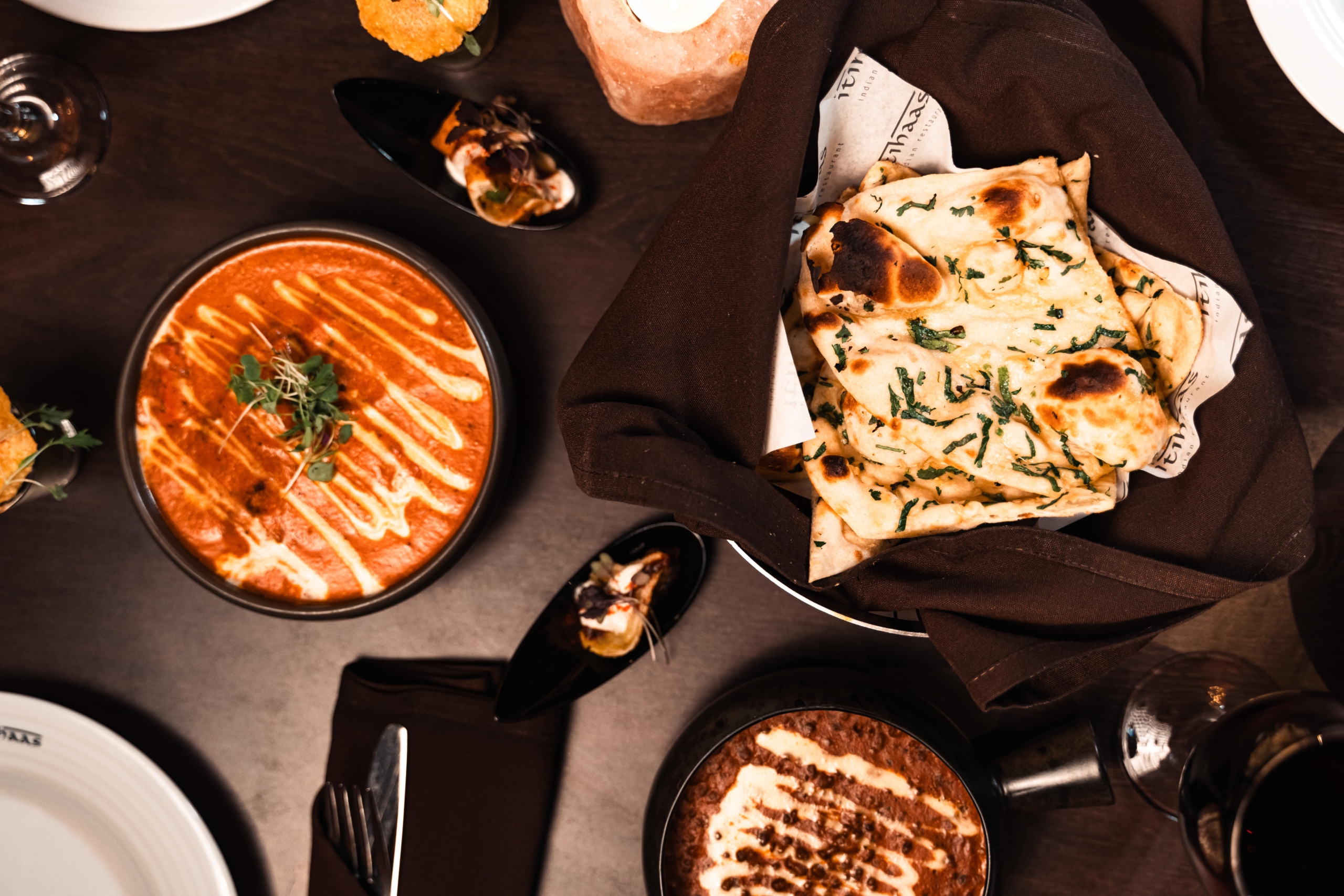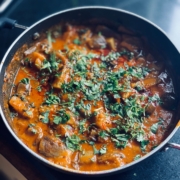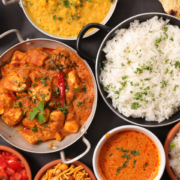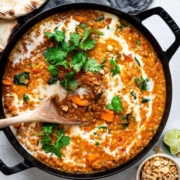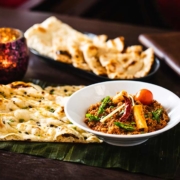Curry Fusion: When Authenticity Meets Contemporary Cooking
Fusion cooking is a term coined to describe the blending of traditional cooking styles. In curry terms, this can mean a lot, because curries are found all over the world, from Jamaican Goat Curry to Thai Green curry. At Itihaas, we celebrate the diversity of the subcontinent, choosing North Indian, Punjabi and Goan dishes. We create a fusion between the Mughal Empire traditions that have stood the test of time and contemporary South-East Asian techniques. The Itihaas menu is sprinkled with Indo-Chinese Fusion, African flavours and traditional curry dishes presented with a modern twist.
Indo-Chinese Fusion Food
Indo-Chinese food is about taking excellent culinary traditions from China and adapting them to Indian tastes. Using Chinese seasonings like soy sauce can lift the flavours of heavy North Indian spices to create a delicious Indian take on Chinese food.
In the Itihaas kitchen, we love stir-frying paneer and soya with chilli to create our Indo-Chinese dishes. We use a traditional Chinese wok over intense flames to fry quickly, which is excellent for vegetarian dishes. Here are some examples from our menu.
Chilli Paneer
Homemade Indian cheese, stir-fried with spring onion, mixed peppers, chilli and garlic tossed together in a dark soy sauce.
Hakka Mock Chicken
Seared soya chunks marinated in dark soy, chilli & coriander sauce, cooked in a traditional Chinese Wok over an intense flame and garnished with chopped spring onion and fried cashew nuts.
Clay Oven / Tandoor Cooking
A Tandoor is a traditional Indian clay oven, used all across the Middle East and East Asia. They come in many shapes and sizes, from small portable tandoor to large, restaurant-size permanent ovens like in the Itihaas kitchen.
A tandoor oven is made from a clay cylinder that curves inwards at the top, like a beehive or amphora, with an insulating material on the outside, which keeps the heat in. The top is open for access and airflow, and a tandoor can remain at high heat for hours with little additional fuel. They are a very sustainable and efficient cooking method.
To cook in a tandoor, a charcoal fire is built in the base to heat the walls and air inside. Allowing the fire to die down, just like in barbecue cooking, means we achieve a consistent temperature within the tandoor. This can be up to 482oC, so food cooks really quickly in the tandoor.
At Itihaas, our traditional roti are baked inside the tandoor along with meats cooked on long skewers over the opening. In this traditional Indian oven, we prepare an Indian fusion starter alongside our tandoori starters.
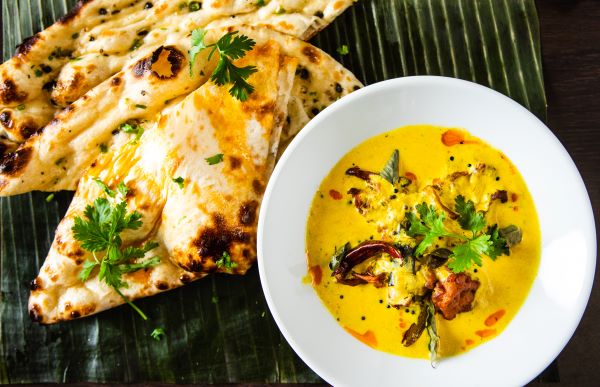
Nairobi Chicken Samosa
This is a Kenyan twist on a north Indian favourite: African-spiced chicken keema wrapped in a pair of light pastry triangles.
Curry Fusion: Maharaja Cuisine with Modern Twists
We pride ourselves on serving authentic Maharaja cuisine, as though our guests are feasting at the Red Fort in Delhi itself. While we serve historic favourites such as Makhani Paneer, we use modern cooking techniques and serving styles, providing luxurious and flavourful food with exemplary service.
Makhani Paneer
Chunks of Indian cottage cheese are drowned in a rich and tangy sauce, laced with cardamom, fresh cream and yoghurt with a subtle hint of chilli. This house favourite is widely recognised as true maharaja cuisine right in the heart of Birmingham City Centre.
Goan Prawn Curry
The west coast state of Goa was colonised by Portugal from the early 16th century until 1961. During those four centuries, a Goan Catholic cuisine developed, blending Indian and Portuguese culinary styles. European use of meat, mustard, vinegar and wine collided with Goan seafood, coconut and rice dishes, creating Vindaloo, Xacuti and Recheado.
On our menu, we serve fresh-water prawns cooked in coconut red gravy with a creamed mustard paste in our Goan Prawn Curry.
Salmon Bay Leaf Curry
This dish combines European Salmon with a traditional coastal curry in a fusion that brings out the delicate flavours of both. In our salmon bay leaf curry, quality salmon fillets are cooked in a spiced sauce which is infused with bay leaf and black cardamom for a strong, deep-noted flavour.
Pride in Presentation
As a traditional Indian restaurant, we aim to provide authenticity in every dish. However, being in Birmingham, with chefs trained in five-star hotel kitchens, we can’t help but mix it up a little. All of our dishes are presented with style, with decorative details that offer a sense of luxury.
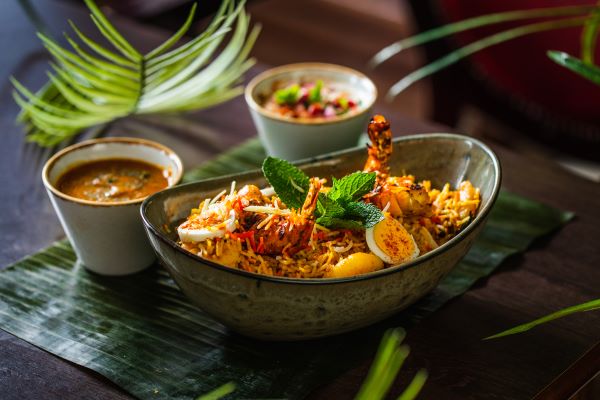
Birmingham’s Traditional Curry House: Authentic 21st-Century Indian Food.
We are proud to have some of the best-trained Indian chefs in Birmingham’s city centre at Itihaas, with high-quality, fresh ingredients prepared in traditional cooking styles from around Asia. We combine the best of the Mughal Empire’s cuisine with the flavours of our favourite cultures and present them beautifully in our restaurant.
To make sure you get a table at Itihaas, booking is essential. You can also order takeaway food from Itihaas, with high-quality food delivered to your door.
Vegan Meat Alternatives For Your Next Homemade Curry
3 Delicious Vegan Meat Alternatives To Try In Your Next Homemade Curry
There are many reasons why you might be looking for alternatives to meat to use in your curries. It may be for health reasons, looking for more variety in your cooking, or because you are considering giving up meat and animal products for good. Fortunately, people have been living full lives without meat for thousands of years, with vegetarian diets common in northern and western regions of the Indian subcontinent since ancient times, so we have plenty of recipes full of protein, without meat. This article explores the best non-meat proteins to use in your homemade vegan curry.
Why Choose Vegan Food?
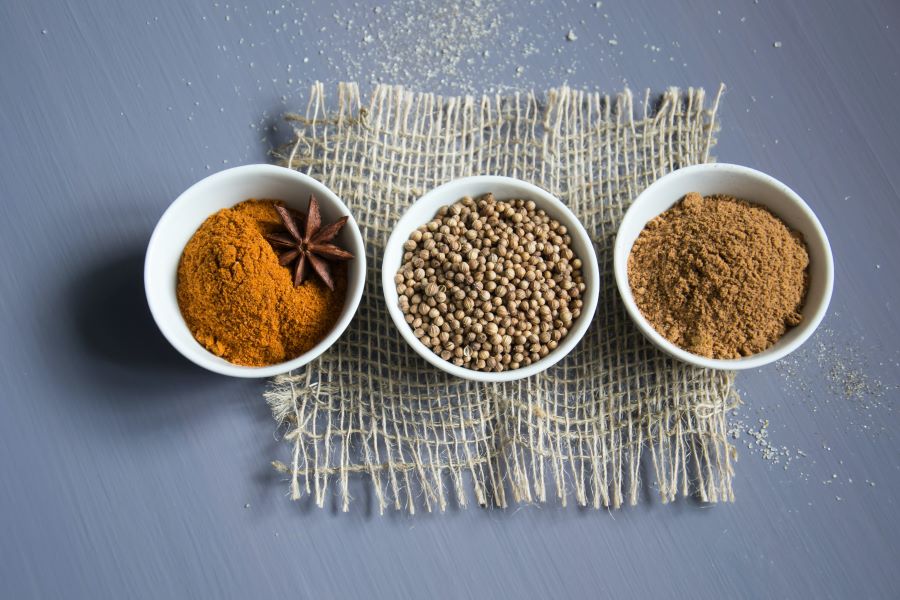
There are many reasons to adopt a vegan diet, most notably the ethical urge to avoid participating in the harm or exploitation of animals. Many ancient Greek, Arab and Indian philosophers and religious figures advocated vegetarianism or veganism on the grounds of non-violence and kindness to animals.
But this is not the only reason to try cooking without animal products.
Health – a vegan diet has very little saturated fat, making it a healthy lifestyle choice to improve cholesterol levels and heart health and support weight loss. Some say a vegan diet can also improve your hormone balance.
Carbon Footprint – because of industrial farming practices prevalent in the global food supply, meat consumption is a large contributing factor to climate change, as a large volume of greenhouse gasses are emitted daily by cattle and other livestock. This could also be tackled with a change in the diet of the animals.
Health Benefits of Homemade Vegan Curry
While a curry doesn’t necessarily have a set list of ingredients, there are some commonalities that are found in most curries, whether they’re Indian, Thai or Caribbean.
Most of the health benefits we get from curries come from the spice palette involved, which of course differs greatly between different regions. Some common spices used in India include cumin, coriander, ginger, cardamom, turmeric and fenugreek. All of these have health benefits, from digestive to anti-inflammatory properties.
A homemade curry also gives you the benefit of cooking with fresh vegetables, such as onions, garlic, spinach, cauliflower, potato, or whatever you want to add. Knowing what you are eating, rather than buying convenience foods, is always a healthier choice.
For protein and carbohydrates, many vegan curries will contain chickpeas, lentils, cauliflower, tofu or beans as sources of protein. As well as protein, these ingredients have a high vitamin and mineral content and provide many benefits for healthy bodies.
The absence of animal fats in a vegan curry is a health benefit in itself, as the fat cells in these are saturated – known for causing high cholesterol, obesity and heart disease. Instead, vegan curries use vegetable fats such as coconut or sunflower oil.
Vegan Curry Ideas: Top Meat Alternatives

How to Make Curry with Tofu
Tofu is a great source of protein that contains no animal products – just soybeans. Also known as bean curd, tofu is made from soy milk curdled into a solid block, like a sort of soy cheese. Tofu is great in any curry sauce, as an alternative to either paneer or meat.
To use Tofu in a homemade vegan curry, coat the tofu in cornflour and gently fry it in oil until lightly browned. Remove the tofu from the pan and keep it to one side while you make the curry sauce.
You can make your usual recipe or try this light summer dish. Fry onions until soft, then add ginger and garlic and stir for 1 minute. Stir in turmeric and any other spices for 30 seconds to release the flavour, before adding coconut milk, lime juice, water and Tofu. Stir until blended and simmer for 5 minutes before adding some spinach and coriander. Then season and serve with roti.
Using Lentils in a Vegan Curry
Lentils are pulses, like peas and beans, and are the seed of the lentil plant. There are red, yellow, green, brown, puy and black lentils, which can all be bought dried and stored at room temperature for up to a year. The different varieties vary in cooking times, with red and yellow lentils taking 15-20 minutes while black lentils take 25 minutes.
Any kind of lentil is easy to use in a simple Daal, a classic comfort food for many in India, Pakistan, Bangladesh and the diaspora. Rinse your lentils under cold water before cooking to remove any pieces of shell. Fry onions, garlic and ginger for a few minutes.
Add turmeric, garam, salt, cumin and chilli and saute. Add lentils together with vegetable stock and stir, bringing it to a simmer. Cover and cook for 10 minutes, until the lentils have absorbed almost all the water. Add coconut milk and tomato puree and simmer for another 5-10 minutes. The lentils should be tender and coated with the spice mixture. Add more stock or coconut milk until you have a consistency you like, and serve with roti or rice, garnished with coriander.
Homemade Curry with Chickpeas
Channa Masala or chickpea curry is a delicious North Indian meal packed with protein, with no meat or gluten. If you have dried chickpeas, you need to soak them overnight with a pinch of bicarbonate of soda, and then cook until tender (either pressure cook for 18 minutes or boil for 45 minutes). If you have tinned chickpeas you can just rinse them, but check they are a good texture by gently squeezing them between your fingers. They should mash easily. If they’re still hard, rinse them and boil them until tender to soften them. Save any water you boil the channa in to make your masala sauce.
Make your masala by heating oil and adding bay, cinnamon, cloves and green cardamom. Add onions and fry until golden, then add ginger and garlic. Fry for another minute, then add tomatoes and a pinch of salt. Cook until the tomatoes are soft, then stir in turmeric, garam, coriander and cumin powders and saute for 3-4 minutes. Add the channa/chickpeas along with 1-2 cups of water or stock and mix well. Simmer for 15 minutes and garnish with coriander leaf. Serve with rice or roti.
Benefits of Vegan Meat Alternatives
Aside from reducing your meat and animal fat consumption, these protein sources have various health benefits that can help you plan your diet around your health.
Tofu
Tofu is a good source of what is called ‘complete’ protein, which means it has all the amino acids your body needs, as well as omega-3, which is good for brain function. It also contains potassium, magnesium, iron, copper zinc and manganese, which each perform different functions in the body. Iron and zinc help maintain a strong immune system, while magnesium and potassium can help reduce blood pressure and cholesterol as part of a healthy diet.
Some types of tofu contain high levels of calcium, which is good for strengthening bones and preventing osteoporosis. However, this calcium is added during the curdling process, so check the label to see if it is present in the brand you buy.
Lentils
Lentils are high in protein, fibre and complex carbohydrates, with very little fat or calories. They also contain folate, potassium, iron and vitamin B1, making them excellent for managing your cholesterol and blood pressure.
The fibre in lentils can support good digestive health and stabilise blood sugar. They provide steady supplies of energy throughout the day, with relatively low calories, helping support weight loss diets.
Chickpeas
Chickpeas or channa are a core ingredient of many Indian dishes, such as daal and vada. They are high in vitamins, fibre and protein, supporting a vegan or vegetarian diet well. channa also helps regulate sugar absorption, lowering blood sugar levels and helping to prevent type 2 diabetes. Soaked channa is high in magnesium and potassium, helping to reduce blood pressure and cholesterol, as well as having anti-ageing and anti-inflammatory effects.
Itihaas Has A Wide Range Of Vegan And Vegetarian Menu Options
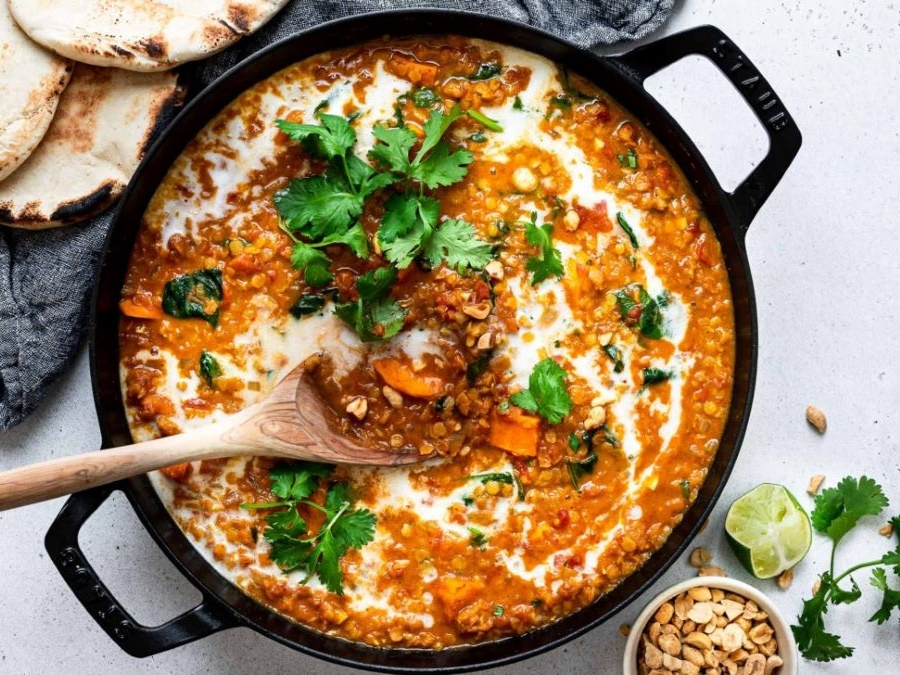
At Itihaas we cook authentic, high-quality North Indian cuisine, combining traditional recipes and contemporary flair to create a truly memorable experience. With chefs trained in 5-star Indian hotels and a service ethic of treating each customer like royalty, we hope to provide something for everyone. Our A-La-Carte menu has a dedicated Subzi (vegetarian) section, with clearly marked, vegan-friendly options such as Tawa Sabzi, Vegan Tofu Curry, Methi Aloo Gobi and Dhaba Channa Masala. We also provide vegan starters, biryani, and roti, so you are not limited to one section but can select from the full menu. Our waiting staff are always happy to answer questions about the dishes to help you find something that is perfectly delicious. Book your vegan curry experience with us online today.
What is the Best Curry in Birmingham? Birmingham Curry Guide
Deciding on the best Indian curry is not as simple as it seems. How do we decide? For some, the best curries are the hottest, while for others it’s the most easily shared, the most authentic, the freshest ingredients or the richest flavours.
Around the world, Curry is not just one thing, though, and not just Indian cuisine. In Northern India, curry is just another way to say a dish served in sauce. In Southern India and coastal regions, curry is generally based on coconut milk with turmeric, lime juice or ginger and so very yellow, while the dishes served in inland areas like Madras are heavy in tomatoes and have a reddish colour.
It is a quirk of translation that we tend to think of curry now as having a particular flavour or set of ingredients, as English marketers sold ‘curry powder’ to those trying to recreate Indian dishes in the 1800s. Curries are found in Caribbean, Indonesian, Thai, Japanese and Malaysian cuisines, each with distinct spice palettes.
Why are curries so popular in Birmingham?
The History of Curries in Birmingham
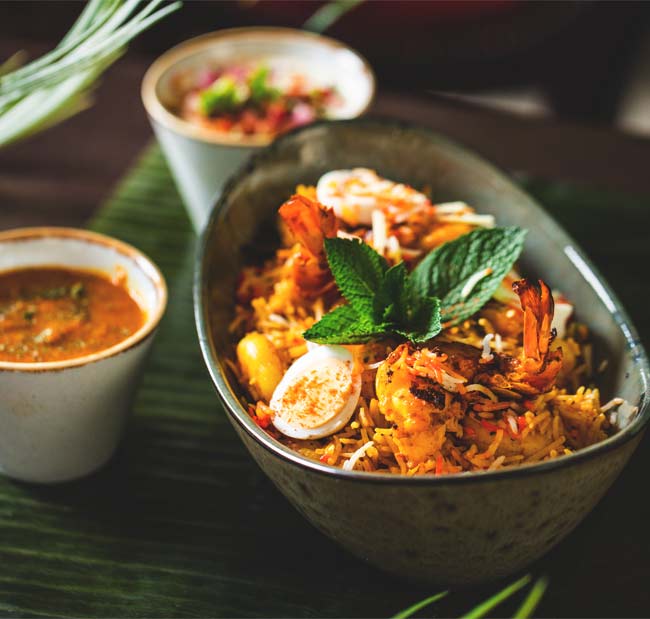
With an immensely diverse population, Birmingham has always been a centre of many cultures living and working together. The popularity of Indian curries and cuisine in Britain had grown since the 1800s, spearheaded by the Royal family and returning British Imperial officials, who made all things Indian the height of fashion.
After the second world war, Birmingham saw high levels of migration from rural areas in Mirpur and Kashmir. Many opened cafes and restaurants, serving curry and rice as well as fish and chips. As Universities expanded in the 1960s, students became a good market for this low-cost, delicious food, with crowds returning from the pubs stopping by in what were usually the only restaurants still open late at night. It is in this environment that Birmingham’s famous Balti curry was born.
Birmingham’s love of curries is down to the vast options we have in the city for delicious food, and the history of fusion and experimentation to cater to everyone’s tastes. One of the most famous curry dishes, the Balti, was (probably) invented here. While there is some debate over the origins of this curry, Birmingham is proud to claim the dish as a local invention. Multiple sources, including the Association for the Protection of the Authentic Balti (APAB), say this dish was invented in Birmingham in the mid-1970s by Pakistani-Brummie restaurant owner, Mohammed Arif, to attract customers beyond the local Pakistani community. The restaurant, Adil’s, recently sadly closed in the heart of the area known as the Balti Triangle in central Birmingham.
Others suggest the Balti originated in Northern India and Pakistan, and that it was in Birmingham that a Balti was first put on a menu in the UK. Brummies love a Balti, with the curry gaining more than 30% of the vote in a local King of Curries poll run by The Birmingham Mail in 2015.
Five Curries to Try in Birmingham
All our dishes are prepared by award-winning Indian chefs and served with the utmost hospitality, recreating the Royal service of the Mughal Empire. We aim to blend historical authenticity with contemporary quality, creating a memorable dining experience.

1. Laal Mirchi Rogan Josh
A lamb curry from Kashmir, a rogan josh has a rich onion & tomato sauce spiced with red chilli, aromatic garam masala and garnished with fresh coriander. Our Laal Mirchi Rogan Josh uses tender spring lamb and fresh laal mirch for fuller flavour.
2. Methi Aloo Gobi
Baby potatoes cooked with cauliflower florets in a light methi (fenugreek) sauce. This is a simple classic dish from Punjab that feeds both body and soul.
3. Goan Prawn Curry
From the Southwestern coastal state of Goa, this delicious dish is a spicy, sour curry. Freshwater prawns are cooked until tender in a red chilli and coconut gravy, with a creamed mustard paste garnish.
4. Dhaniya Tahree Murgh
A north Indian classic, this dish contains diced chicken curried in a fragrant, smooth sauce of onion, paprika and plenty of fresh coriander. Of the spicy curries we serve, this is a firm favourite.
5. Tikka Masala
The Chicken Tikka Masala is another British curry favourite, supposedly invented in Glasgow in 1971, when Bangladeshi chef Ali Ahmed Aslam added a masala sauce to a plate of chicken tikka.
While not an original Indian dish, the Tikka Masala is worth a mention. At Itihaas, we serve a Tandoori Soya Tikka Masala, marinating soy pieces in a spice mix before pan frying and serving in a deep, thick masala gravy for a vegetarian option that pleases even the mildest palette.
Check out our menu for our range of curries, biryani and more
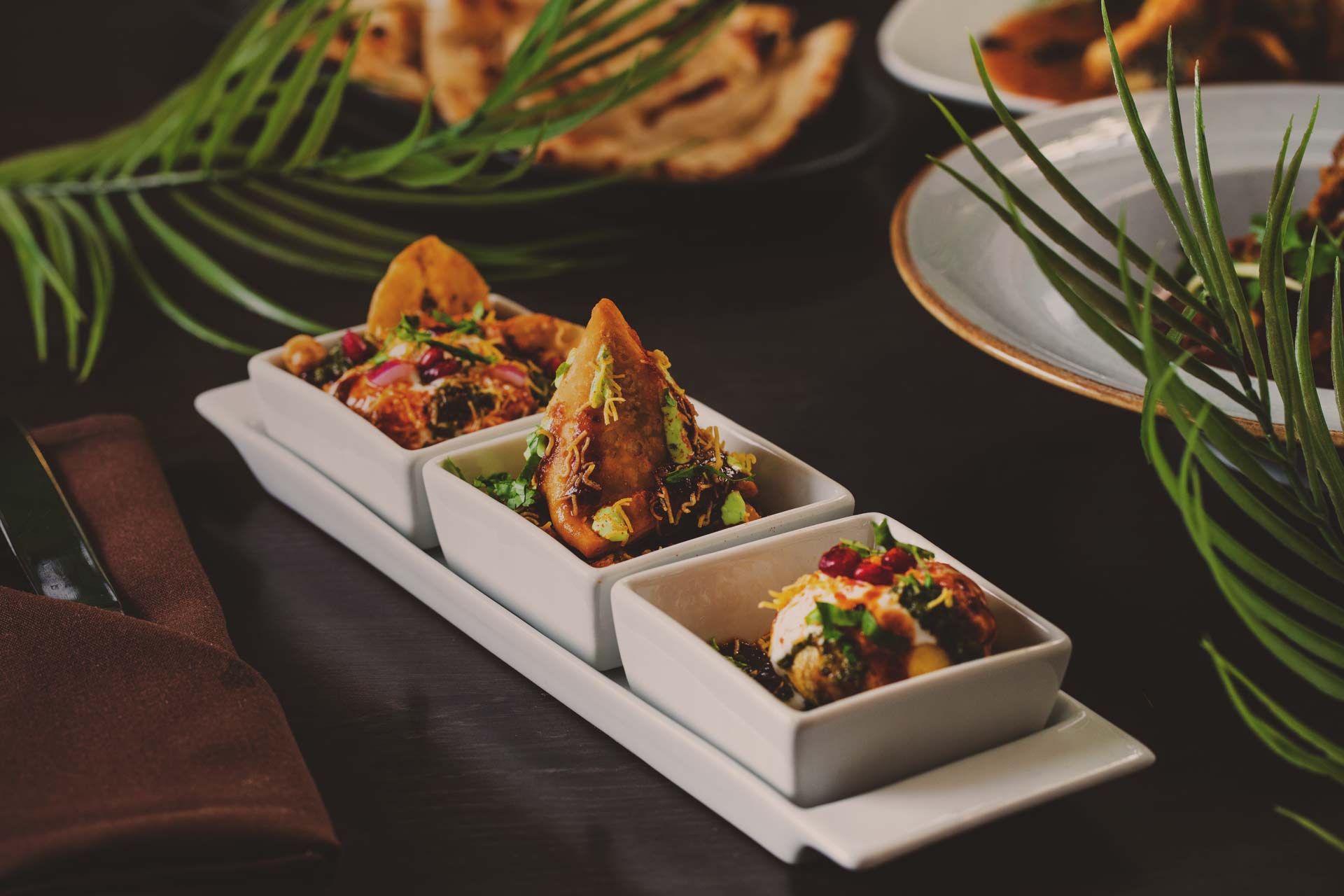
All these curries can be found on our a la carte menu, alongside many more lamb, chicken, seafood and vegetarian dishes. Quench your curry craving at Itihaas, named Best UK Restaurant in the Cobra Good Curry Guide. We cater to large parties and intimate dinners in our restaurant in Birmingham’s Jewellery Quarter, so book ahead to be sure of a table.

